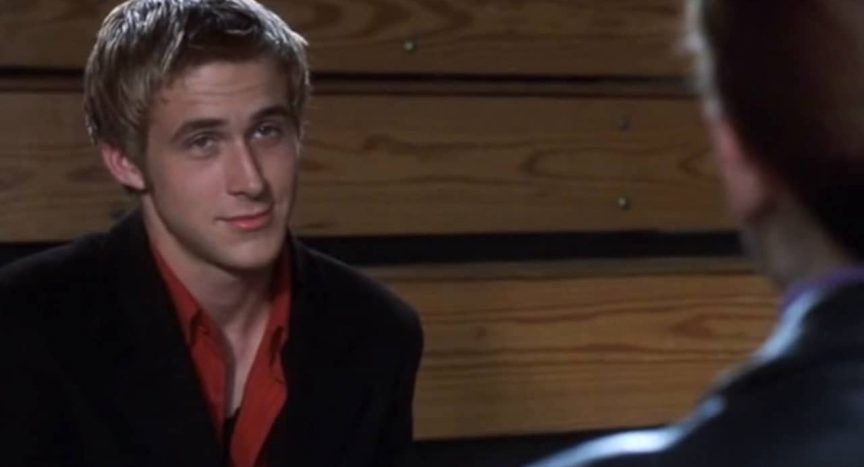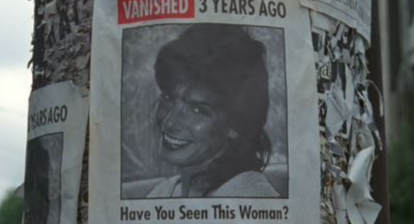Following it’s initial release in 2002, The Guardian’s Peter Bradshaw dubbed the psychological thriller Murder by Numbers a movie consisting of “…a garbled, unbelievable plot; dull performances; an absurd, back-projection cliff-edge finale.” Personally I don’t agree. Don’t get me wrong, the movie is by no standards perfect, it could be viewed as a painfully predictable procedural that’s littered with whiney teen angst. It’s a mixed bag regardless of where you stand. That being said I enjoy it based on its collective merits.
Murder by Numbers follows a tenacious homicide detective (Sandra Bullock) and her new partner (Ben Chaplin) who discover the body of a young woman. The trail inevitably leads to two brilliant young men (Ryan Gosling), (Michael Pitt). Through the investigation, the detective discovers dark secrets in the teenagers’ past that explain how they could be capable of such cold calculated crimes.
Also See: Is Scream Based on a True Story?
I guess it is a bit far fetched. Two brilliant but deeply disturbed, high school aged boys mapping out the perfect crime as some sort of social experiment. It’s unrealistic. Or is it? Sort of.
The crime, nearly 100 years old now, at the time it was called ‘The Crime of the Century’, a title that would later be handed off to the utter insanity that was the 1995 OJ Simpson case, with a trial the likes the world had never seen; it was a full-blown media circus that would forever shake the city of Chicago. It goes by many names. ‘The Crime of the Century’, ‘America’s First Thrill Kill’, ‘The Murder of Bobby Franks’. but you may know it better as the bizarre case of Leopold and Loeb.
Nathan Leopold, born 1904, was the son of a wealthy German Jewish immigrant family in Chicago. He was a child prodigy with a genius level IQ that apparently spoke his first words at the age of four months. Despite his intelligence Leopold wasn’t exactly well-liked. He was often described as arrogant and anxious in social gatherings.
Richard Loeb, born 1905, was also part of a wealthy Chicago family. Like Leopold, Loeb was highly intelligent and even managed to skip several grades in school. While he was no doubt gifted he was also incredibly lazy. Loeb lacked motivation regarding his intellectual pursuits, often preferring to read his precious detective novels, play tennis or attend parties. He was handsome, fond of history, and thrived in social situations.
In terms of their personalities the two boys could not have been more different. However, after growing close as classmates at the University of Chicago, the boys quickly bonded over their love of crime, detective novels and the works of philosopher Frederick Niche. The young men were convinced that they fit Niche’s concept of supermen (Übermenschen). In a letter to Loeb, Leopold wrote, “A superman…is, on account of certain superior qualities inherent in him, exempted from the ordinary laws which govern men. He is not liable for anything he may do.”
Also See: Check out the trailer for The Turning!
Basically these delusions of grandeur lead them to believe they could do pretty much anything and get away with it. They started small with petty theft and cheating at cards and soon advanced to arson. It was around this time that the partners in crime began engaging in a sexual relationship. As the acts of criminality got more intense, the aggressive Loeb began to get irritated at the lack of media coverage for their dastardly deeds. This is the point at which they decided to put their status as “supermen” to the test. How? By committing the perfect crime.
The duo settled on the kidnapping and murder of a child. They spent 7 months mapping out exactly how they would take their victim, the method of the murder, and how they would dispose of the body. Eventually they settled on a suitable victim in the form of 14 year old Robert “Bobby” Franks. Richard Loeb knew Franks and just how wealthy the boy’s family was because they were second cousins. They were also neighbors that often played tennis together. Talk about too close to home, amirite?
They set the plan in motion on May 21st of 1924. After umpiring a baseball game, Franks was walking home when Loeb and Leopold pulled up in an automobile (which they rented under the name “Morton D. Ballard”) to offer the boy a ride. Originally Franks had declined as his home was less than two blocks away. But Loeb managed to persuade him to get in so they could discuss a certain tennis racket that Franks was using the last time he and Loeb played. Loeb explained that he wanted to buy the racket. Bobby thought nothing of it and happily climbed into the passenger side seat.
This is where things get fuzzy. Officials are still on the fence about the actual sequence of the events that followed. The widely accepted scenario is that while Leopold drove, Loeb sat in the back seat where the murder weapon (a chisel) was hidden away. With Franks sitting in front of him Loeb struck the boy several times in the head and dragged him into the back seat where he was gagged. Franks died shortly thereafter.
Also See: Brinna Kelly Talks The Fare [Interview]
After driving south of Chicago, Leopold and Loeb dumped the body in their predetermined spot at Wolf Lake. This is where they removed Franks’ clothes and dumped hydrochloric acid on his face, genitals, and abdomen to hide his identity. They then shoved his body in a culvert near a set of train tracks. The two men were summoned for formal questioning on May 29th. Unbeknownst to Leopold and Loeb they were made suspects quickly due to a major error they made during the body’s disposal. At some point Leopold accidentally dropped his glasses.
These glasses were quickly recovered near the body. While the brand and prescription was common enough, police noticed that the frames were fitted with an unusual hinge mechanism. This mechanism was so unusual that they were only able to locate three people in Chicago that had purchased them. One of them being Nathan Leopold.
With their alibi disproven, the glasses near the body, and the typewriter used to write the ransom note recovered, the jig was up and Loeb was the first to confess. Both men explained that the motive was simply a thrill-seeking experience on top of the desire to commit the “perfect crime”.
The trial was nothing short of a media circus. Such a brutal crime for such a pointless reason? The public wanted Loeb and Leopold to hang. The proceedings would prove to be a slippery slope for renowned criminal defense lawyer Clarence Darrow.
It took the airing of Leopold and Loeb’s dirty laundry (including, in Leopold’s case, allegations of sexual abuse by a former governess), a series of expert witnesses, and a twelve hour summation given by Darrow at the conclusion of the hearing before the judge decided that the men wouldn’t hang. Instead he settled on sentencing both men to life imprisonment for Franks’ murder and an additional 99 years for the kidnapping.
Also See: Actor Graham Skipper Talks Bliss [Frightfest 2019 Interview]
Just when you thought you’ve heard the last of these two, a story broke in January of 1936 that detailed the death of Richard Loeb. Loeb was killed by fellow inmate James Day in the prison shower room. Day alleged he was simply defending himself.
Meanwhile, Leopold became a model prisoner. After 33 years and numerous unsuccessful parole petitions, Leopold was set loose in March of 1958. He died August 29th of 1971. It was the result of a diabetes-related heart attack.
Bobby Franks’ death inspired several feature films as well as theatre, and even works of literature. These include the 1929 play Rope by Patrick Hamilton, the 1948 Alfred Hitchcock film of the same name, the 1956 novel Compulsion by Meyer Levin and its 1959 film adaption. It’s also birthed the novels Native Son by Richard Wright, Nothing but the Night by James Yaffe and Little Brother Fate by Mary-Carter Roberts. In addition, the murder served as inspiration for the play Never the Sinner by John Logan and an episode of the Canadian Television series Murdoch Mysteries.
In recent years we can see other works influenced by Leopold and Loeb; the 1992 film Swoon by Tom Kalin, Micheal Haneke’s 1997 flick Funny Games and it’s 2008 remake, the 2002 black comedy R.S.V.P, the graphic novel Ice Haven by Daniel Clowes, the Off-Broadway musical Thrill Me: The Leopold and Loeb Story and the 2014 novel Murder Most Queer by theater scholar Jordan Schildcrout.
Given my soft spot for Murder by Numbers, I thought it would be interesting to compile a breakdown of the similarities and differences between the film and the crime by which it was inspired. Spoilers ahead.
The Premise
While the crime took place in 1924 Chicago, the film is set in modern day (as of 2002) in the fictional town of San Benito, California. Setting the film in the present meant our murderers would have to try to outwit modern advancements such as DNA testing. While the film’s focus is on the killers and their “perfect crime”, viewers get an interesting subplot via Sandra Bullock’s character, Detective Cassie Mayweather.
The killers in Murder by Numbers, Richard Haywood (Ryan Gosling) and Justin Pendleton (Michael Pitt) are high school classmates, meaning they would be slightly younger than Leopold and Loeb. Somehow this adds a more insidious element to this story.
The Murder
Months of searching for a victim lead Leopold and Loeb to Bobby Franks who just so happened to be a member of Loeb’s family. Arguably one of the biggest flaws in their plan was picking a victim that had a connection to them. Meanwhile Justin and Richard chose a victim at random to ensure there is no trail leading back to them. They settled on a grown woman named Oliva.
Again, with the murderers needing to outwit modern day advancements in Murder by Numbers, a lot more planning goes into this crime. They establish seemingly concrete alibies, stage a crime scene to throw the timeline off, and even go so far as to plant bits of evidence at the crime scene.
While Franks was struck in the head with a chisel then smothered with a rag in his mouth, Oliva was subdued with a hammer to the head in her home. She is taken to an undisclosed location and strangled before her body is dumped. Post mortem mutilation to the body follows similar to the Franks case.
A Strange Relationship
Like Leopold and Loeb, Justin and Richard’s relationship in Murder by Numbers was a bit bizarre. They clearly ran in completely different social circles. Richard is quickly established as the Loeb of this duo for his confidence, good looks, intelligence, and more dominate aura. This makes Justin a knockoff Leopold with his genius level smarts, more passive behavior, and cocky attitude.
While their relationship never got sexual it was incredibly possessive. When Richard suspects that Justin has slept with their classmate, Lisa, Richard displays a decidedly jealous response. He assaults Justin, has sex with Lisa, and records the encounter, sending the video to Justin.
Also See: Scary Stories to Tell in the Dark Offers Spine-Chilling Nostalgia
A Clue Left Behind
One of the biggest discoveries that lead to Leopold and Loeb’s undoing was a pair of glasses left behind. The glasses were traced back to Leopold because of the unusual hinge mechanism. In the case of Murder by Numbers, a clue is also left behind near the victim’s body. In the film, the clue comes from vomit left at the crime scene.
While dumping the body in the woods, Justin becomes nauseated and throws up nearby. After being analyzed by the police, it’s revealed that the stomach contents contain trace amounts of caviar. There just so happens to be one restaurant in San Benito that sells caviar. And there just so happens to be one high school student who eats at this particular restaurant. You guessed it: Justin Pendleton.
The “Real” Killer
Over the years, there has been some speculation as to who actually delivered the final blows to Bobby Franks although it is widely accepted that Loeb was the murderer. While most observers do believe Loeb to be the killer, some circumstantial evidence – including eyewitness testimony suggests that Leopold could have been the killer.
In Murder by Numbers there is absolutely no speculation. Thanks to video evidence it is proven that the passive Justin was coxed into strangling their victim.
Research Sources:
Chicagology: Notorious Chicago Article
Murderpedia: The Leopold and Loeb Case
Episode 12 of Based on a True Crime Podcast





